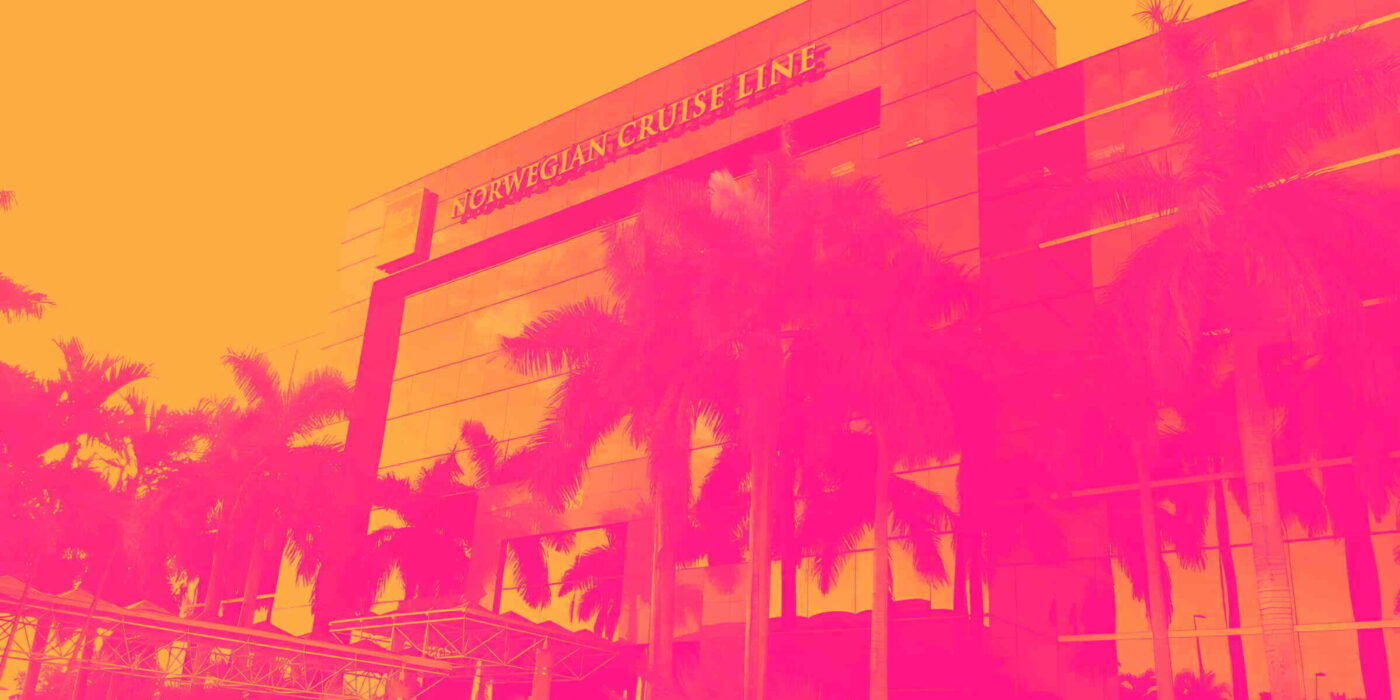
Cruise company Norwegian Cruise Line (NYSE: NCLH) missed Wall Street’s revenue expectations in Q3 CY2025 as sales rose 4.7% year on year to $2.94 billion. Its non-GAAP profit of $1.20 per share was 3.3% above analysts’ consensus estimates.
Is now the time to buy Norwegian Cruise Line? Find out by accessing our full research report, it’s free for active Edge members.
Norwegian Cruise Line (NCLH) Q3 CY2025 Highlights:
- Revenue: $2.94 billion vs analyst estimates of $3.02 billion (4.7% year-on-year growth, 2.7% miss)
- Adjusted EPS: $1.20 vs analyst estimates of $1.16 (3.3% beat)
- Adjusted EBITDA: $1.02 billion vs analyst estimates of $1.02 billion (34.7% margin, in line)
- Management raised its full-year Adjusted EPS guidance to $2.10 at the midpoint, a 2.4% increase
- EBITDA guidance for the full year is $2.72 billion at the midpoint, in line with analyst expectations
- Operating Margin: 25.5%, in line with the same quarter last year
- Free Cash Flow was -$726.5 million compared to -$195.5 million in the same quarter last year
- Passenger Cruise Days: 6.83 million, up 306,633 year on year
- Market Capitalization: $10.1 billion
“We delivered another record-breaking quarter, with strong performance across all brands. These results highlight the strength of our business, the broad appeal of our multi-brand portfolio, and the outstanding execution by our teams both shoreside and shipboard,” said Harry Sommer, president and chief executive officer of Norwegian Cruise Line Holdings Ltd.
Company Overview
With amenities like a full go-kart race track built into its ships, Norwegian Cruise Line (NYSE: NCLH) is a premier global cruise company.
Revenue Growth
A company’s long-term sales performance is one signal of its overall quality. Even a bad business can shine for one or two quarters, but a top-tier one grows for years. Over the last five years, Norwegian Cruise Line grew its sales at an exceptional 28.6% compounded annual growth rate. Its growth beat the average consumer discretionary company and shows its offerings resonate with customers.
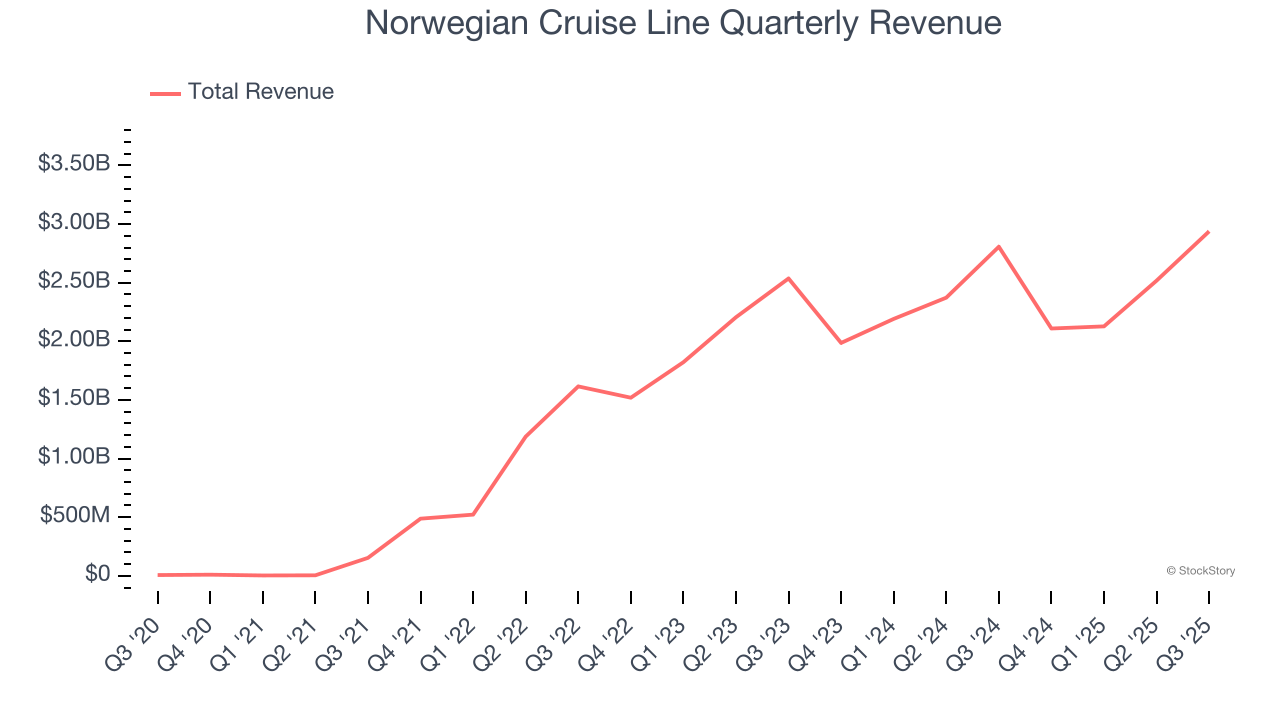
We at StockStory place the most emphasis on long-term growth, but within consumer discretionary, a stretched historical view may miss a company riding a successful new property or trend. Norwegian Cruise Line’s recent performance shows its demand has slowed significantly as its annualized revenue growth of 9.5% over the last two years was well below its five-year trend. 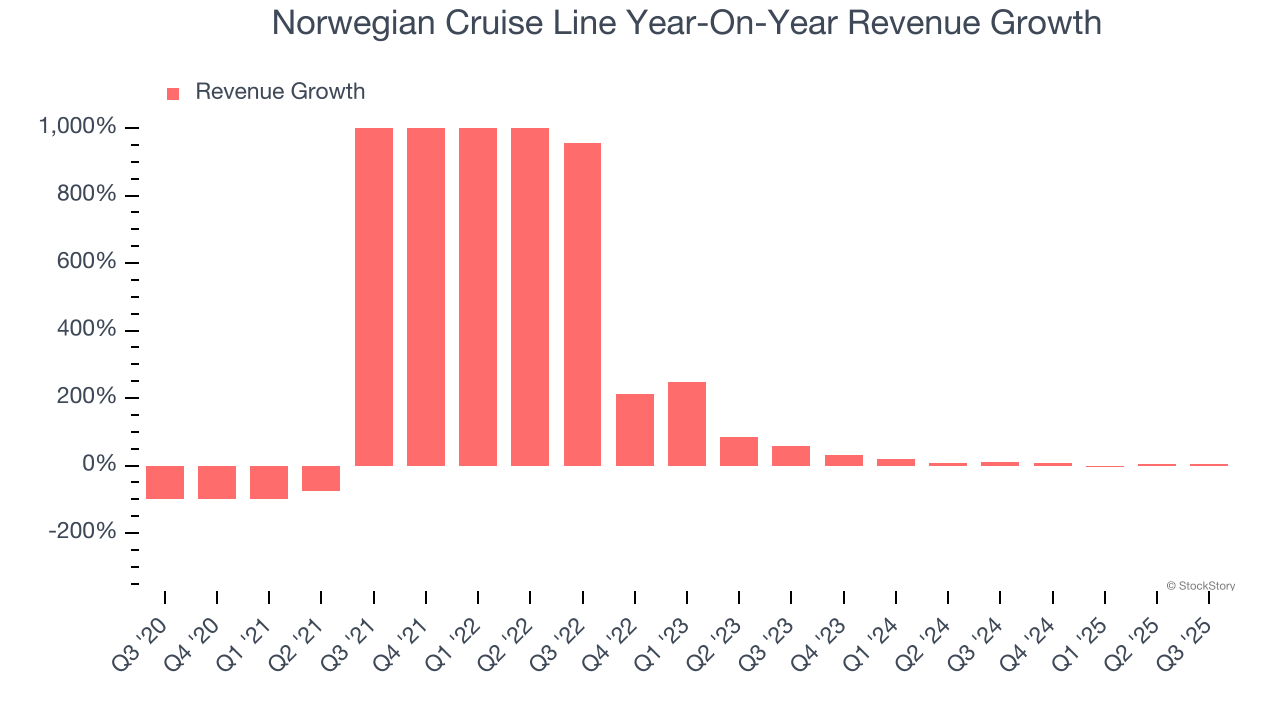
We can dig further into the company’s revenue dynamics by analyzing its number of passenger cruise days, which reached 6.83 million in the latest quarter. Over the last two years, Norwegian Cruise Line’s passenger cruise days were flat. Because this number is lower than its revenue growth during the same period, we can see the company’s monetization has risen. 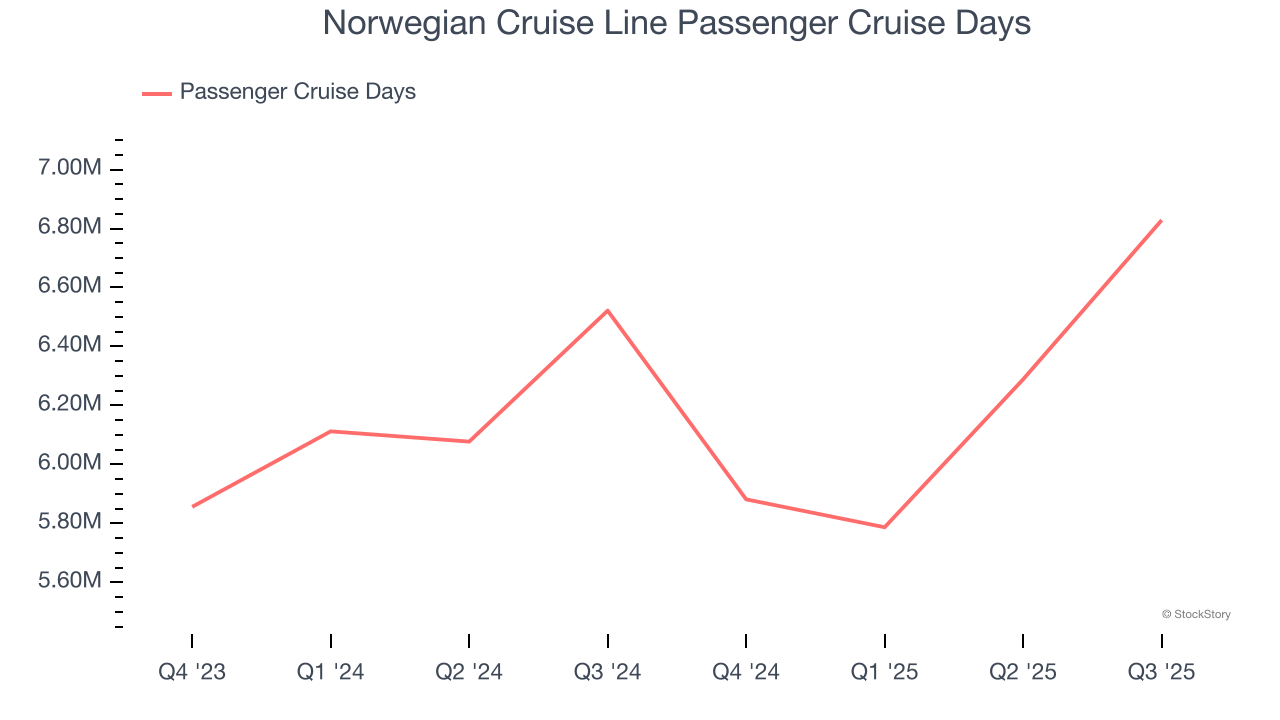
This quarter, Norwegian Cruise Line’s revenue grew by 4.7% year on year to $2.94 billion, falling short of Wall Street’s estimates.
Looking ahead, sell-side analysts expect revenue to grow 12.5% over the next 12 months, an improvement versus the last two years. This projection is above the sector average and implies its newer products and services will fuel better top-line performance.
Software is eating the world and there is virtually no industry left that has been untouched by it. That drives increasing demand for tools helping software developers do their jobs, whether it be monitoring critical cloud infrastructure, integrating audio and video functionality, or ensuring smooth content streaming. Click here to access a free report on our 3 favorite stocks to play this generational megatrend.
Operating Margin
Operating margin is an important measure of profitability as it shows the portion of revenue left after accounting for all core expenses – everything from the cost of goods sold to advertising and wages. It’s also useful for comparing profitability across companies with different levels of debt and tax rates because it excludes interest and taxes.
Norwegian Cruise Line’s operating margin has been trending up over the last 12 months and averaged 15.6% over the last two years. Its solid profitability for a consumer discretionary business shows it manages its expenses efficiently and benefits from operating leverage as it scales.
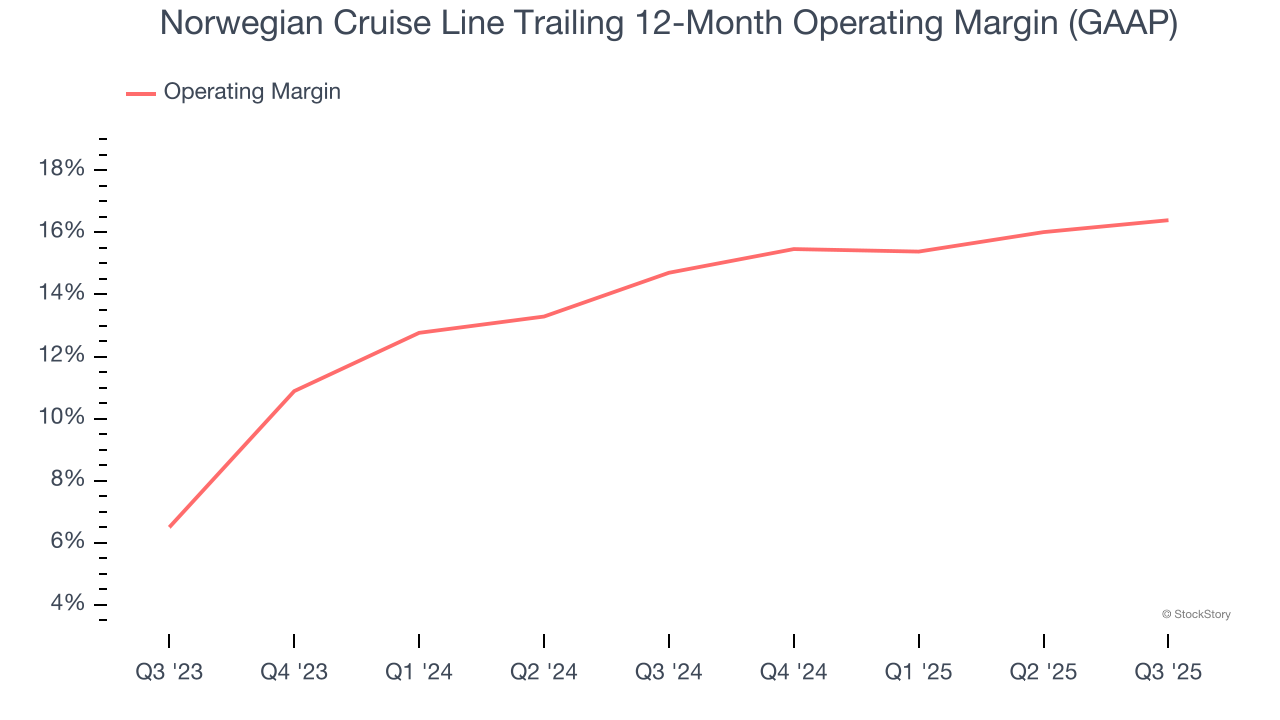
In Q3, Norwegian Cruise Line generated an operating margin profit margin of 25.5%, in line with the same quarter last year. This indicates the company’s overall cost structure has been relatively stable.
Earnings Per Share
Revenue trends explain a company’s historical growth, but the long-term change in earnings per share (EPS) points to the profitability of that growth – for example, a company could inflate its sales through excessive spending on advertising and promotions.
Norwegian Cruise Line’s full-year EPS flipped from negative to positive over the last five years. This is a good sign and shows it’s at an inflection point.
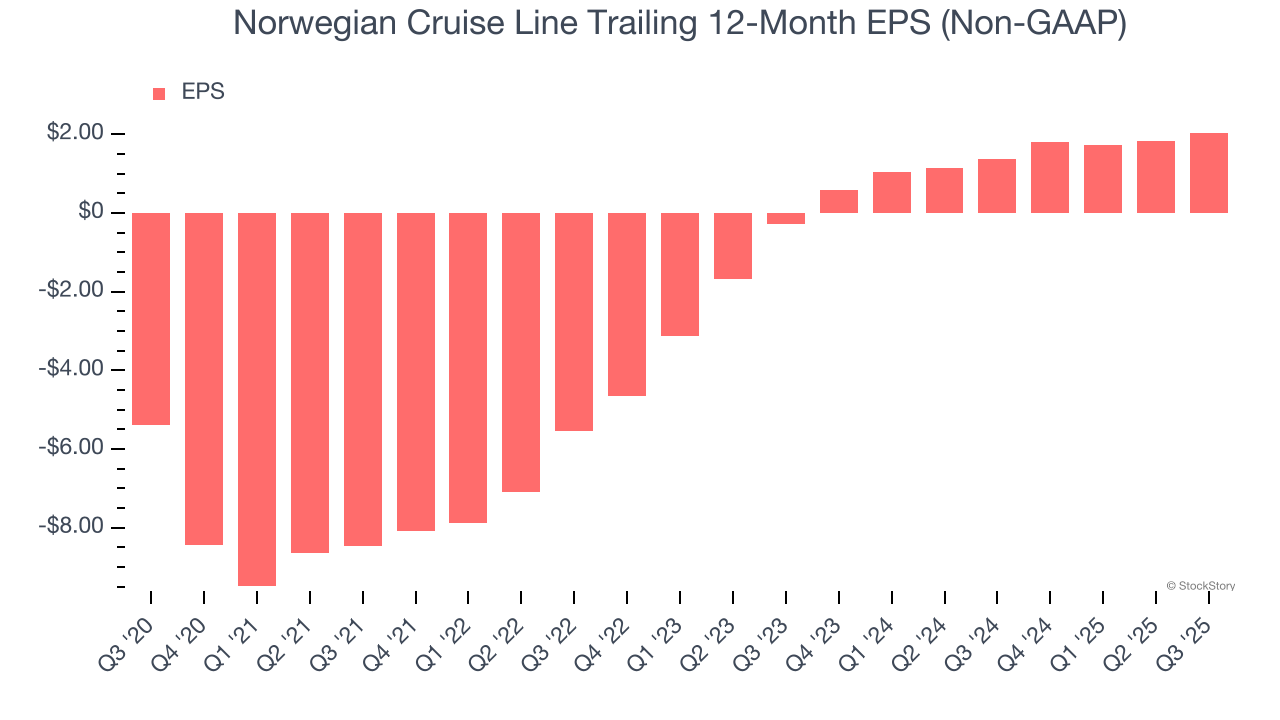
In Q3, Norwegian Cruise Line reported adjusted EPS of $1.20, up from $0.99 in the same quarter last year. This print beat analysts’ estimates by 3.3%. Over the next 12 months, Wall Street expects Norwegian Cruise Line’s full-year EPS of $2.04 to grow 29.1%.
Key Takeaways from Norwegian Cruise Line’s Q3 Results
It was good to see Norwegian Cruise Line beat analysts’ EPS expectations this quarter. On the other hand, its revenue missed and its EBITDA guidance for next quarter fell short of Wall Street’s estimates. Overall, this was a softer quarter. The stock traded down 5.4% to $20.96 immediately after reporting.
Norwegian Cruise Line didn’t show it’s best hand this quarter, but does that create an opportunity to buy the stock right now? When making that decision, it’s important to consider its valuation, business qualities, as well as what has happened in the latest quarter. We cover that in our actionable full research report which you can read here, it’s free for active Edge members.







